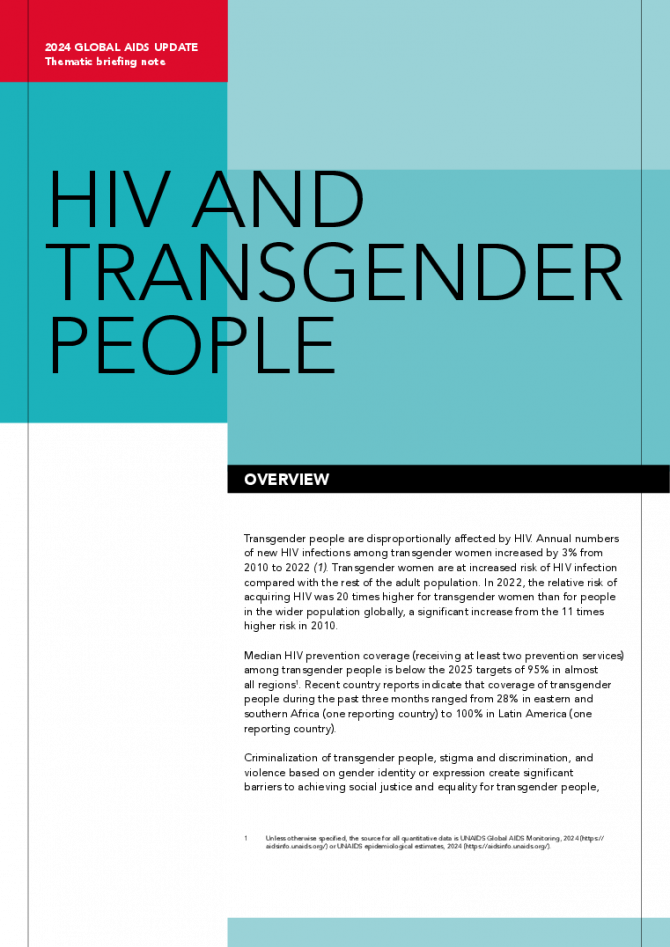Documents
HIV and transgender people — Thematic briefing note — 2024 global AIDS update The Urgency of Now: AIDS at a Crossroads
22 July 2024
Transgender people are disproportionally affected by HIV. Annual numbers of new HIV infections among transgender women increased by 3% from 2010 to 2022. Transgender women are at increased risk of HIV infection compared with the rest of the adult population. In 2022, the relative risk of acquiring HIV was 20 times higher for transgender women than for people in the wider population globally, a significant increase from the 11 times higher risk in 2010. Median HIV prevention coverage (receiving at least two prevention services) among transgender people is below the 2025 targets of 95% in almost all regions. Recent country reports indicate that coverage of transgender people during the past three months ranged from 28% in eastern and southern Africa (one reporting country) to 100% in Latin America (one reporting country). Criminalization of transgender people, stigma and discrimination, and violence based on gender identity or expression create significant barriers to achieving social justice and equality for transgender people, and to ensuring health for all through access and uptake of HIV services. Structural factors, including transphobia, result in discrimination, which leads to limited work opportunities, reduced access to health-care services, legal barriers, and mental health challenges. These factors also influence behavioural risk factors, including condomless sex, unsafe sex work, and sharing needles for hormone injections or drug use, leading to substantial inequalities in HIV outcomes. Gender-affirming care has been shown to improve antiretroviral therapy adherence, viral load suppression achievement, and HIV prevention in transgender people. Related links: New UNAIDS report shows AIDS pandemic can be ended by 2030, but only if leaders boost resources and protect human rights now | Full report

